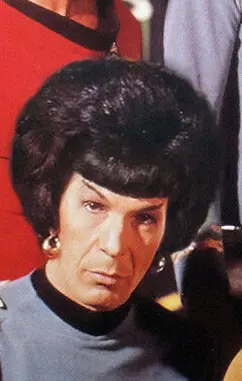I know this has been an infuriating topic for a while now, but gosh it’s getting on my nerves. I’m trying to watch Secret Level, finally, and I can’t see half of what’s happening because so many scenes across many of the shorts are pretty much pitch black.
Why?? Why not, y’know, just give us a little bit of fucking contrast? Instead, I have to choose whether to have a light on or to not see the scenes.
they assume people have better TVs now than a decade or more ago
so those of us watching on older hardware suffer
side note: my OLED TV is fantastic for contrast. the smooth motion shit glitches the fuck out sometimes though no matter which setting it is on (including off, somehow?), and it’s a smart TV so now it constantly asks for me to update it so it can spy on me more or some shit idk. super fucking annoying to have to dismiss a popup every time it turns on
Gotham was bad for this
Lighting is expensive!
What’s your exact watching setup? Like TV, room, player, source?
There are likely ways to mitigate this, but it all depends on your setup.
What video player doesn’t have a gamma slider?
I can tolerate that, the one I can’t stand is Netflix shows where the ~dialogue is a mumbled quiet~ and random bits of foley try to blow my speakers out.
It makes it especially noticeable just how dodgy a lot of foley/sound editing work is, eg when someone throwing a punch and missing still goes WHOOSH at the same volume they use for gunshots. There’s YA shows now where even the camera panning gets a sound effect ffs
Soumd engineers are.big dicks these days. I am thinking of building a limiter and hooking my tv to a sound bar.
Dialogue is not really important, what you really need to hear is the exaggerated wet sucking noises of characters kissing each other.
(/s)
This cause could be downmixing from something like 5.1 or 7.1 to stereo. Because dialogue is mostly on the center channel while music and SFX are much more spread out in the soundstage, you might have a sound appear on speakers center, front left and back left while dialogue only happens on center.
This would mean that depending on the mix, you might have a sound that’s 2-3 times louder than the dialogue when mixed to stereo since all those sounds have to get played on fewer speakers.
This is why a 5.1 compatible soundbar will be more balanced than stereo speakers, even if it doesn’t have full surround sound. They have a physical speaker for each of the channels so at least the mix sounds better.
Not saying this is always the issue but its certainly one of the possible causes.
This myth gets brought up so often despite numerous evidence to the contrary. The sound sucks for people with good equipment as well. The sound sucks in theaters.
They just seem to have a hard-on for mumbling. Because of realism or something.
I’d love to see the evidence, it depends on your player and how you’re downmixing. There are some that do it better than others but this is definitely a thing.
The evidence is that even on good equipment the dialogue is hard to hear.
Gonna hop in then with my own anecdotal evidence.
I have a 7.2.4 Dolby Atmos setup in my living room(11 speakers, two subs). Outside of my subwoofers the center channel is the most expensive single speaker in the setup. I absolutely do not have this issue. Dialog is always crystal clear. I own nearly 4000 physical copies of movies/shows on disc. So I’ve watched a lot of different media.
Is that needed to correct this issue…absolutely not. I have a $150-200(can’t remember) 5.1 soundbar from Best Buy in my bedroom and it’s perfectly adequate as well. My sister was complaining about this exact volume issue and bought the same sound bar, problem solved. I will mention this setup doesn’t work as well but is acceptable for Nolan movies and his notoriously messed up mixes. My Atmos setup is great. He mixes for theaters not ~10w stereo TV speakers. Some people still hate his mixes…even in theaters. 🤷♂️
Do I know the issue people are talking about…absolutely. I’ve experienced it myself. The hardware you have and the way it’s configured matters tremendously. Sometimes just turning on ‘Reduce loud sounds’, night mode, or audio compression can help. These are all the same thing with different names(and others). Their implementations and effectiveness can differ by device though. It compresses the dynamic range of the audio mix. Basically the loudest sound(explosions) and the quietest sound(whispers) don’t have such a huge volume difference. Which can help with the ‘blowing out my ear drums’ experience.
Okay, I guess two can play the “trust me bro” game. I have stereo speakers on which this is an issue and a 5.1 compatible soundbar on which it is not. Same file, same player.
They are giving you contrast, lots more contrast.
That’s actually the problem, most people don’t have very good displays and additionally watch dark content in lit rooms - but showrunners are pushing for HDR, when you’ve got a $20k Sony OLED PVM in bt2020 or ‘color space off’ (native gamma), everything looks good. (There is a BT709/sRGB emulation mode, but I don’t think they care enough to use it)
Try to watch the same on an IPS LCD with possibly not even 100% SRGB coverage and you’re going to have a bad time. Even a VA will have a bad time if viewed off-axis.
You can usually fix it by turning off power saving/eco mode and setting the gamma to 2.2 on your TV. You should also turn off motion smoothing (Trumotion/Auto Motion Plus/Motionflow/Clear Motion) so motion doesn’t look overly smooth and fake.
I hate that motion smoothing is turned on by default these days. I know it’s because sports fans want it enabled, but it makes literally everything else look like a garbage low budget soap opera.
In audio, you would test with multiple reference monitors and rooms. Cellphone, car, shitty tv speakers, mono, various headphones, etc. The idea being you record/edit/mix it on normal monitors, but then check it out in ways that normal people will, to see if it translates well or will sound like shit.
Can confirm. The most important test for my mixes is the car test. Get your buddies together, and hopefully they have a variety of cars. Play it in a nice car with great speakers, play it in a shitty 2001 Corolla with a blown out cone in the passenger door, and as many in between as you can get. The more homogenous the listening experience is across those cars, the better your mix will sound on a variety of systems.
For most people, their car is the best sound system they own. It’s also where people do a lot of listening, because very few people drive in complete silence. So if it sounds like ass in the car, people will stop listening.
I get where you’re coming from but movie audio also fails here. The same darkness discussion arises about dialogue-to-explosion volume regularly :)
That doesn’t take away from what you said they “proper” audio work is done that way …
Oh yeah, “movie theater dynamics” on home mixes kills me. I’m so glad Hollywood has, or at least had a period of that being toned down. Like I get the need to have explosions explosively louder than a whispering scene, but Jesus fucking Christ, give me a break, it doesn’t need to be THAT extreme.
In some movies when I’m watching at home, I swear, there’s a noticable two-mode system that’s quite clearly loud-mode and quiet-mode, that if you had a macro on your volume, you could literally switch between, and the mastering would fit perfectly, and it’s probably only 6-12db different.
That type of thing just isn’t necessary. Or maybe there could be a different audio track. People have the bandwidth and storage, now, it’d be fine.
HDR
This is definitely a thing. See comment with screeshots from Picard. But I don’t let it infuriate me - just adjust the screen or crank up the gamma or, if you want the cinematic experience, switch off surrounding lights.
I have to choose whether to have a light on or to not see the scenes.
have you ever adjusted your TV? sounds to me like it might just need some calibrating.
I guess I’ve gotta figure this out. It’s pretty new and I thought it was supposed to just be able to help with the darkness. But I dunno
It’s pretty new
Almost all TVs come with a power saving or eco mode enabled by default which ruins visibility. Find that in the settings and turn it off. You should also turn off motion interpolation (e.g Trumotion, Clear Motion Plus, Motionflow) so motion doesn’t become a smeary and artificial mess.
Dark shows on decent/properly calibrated screens are my crack tho. Why must you deprive me.
You do you, boo. I just want to see what I’m watching ;-;
You know what, fair enough. My reply was more tongue in cheek. I don’t doubt it would be frustrating.
Probably need to tweak the settings on whatever display you’re using, or potentially consider investing in a more-modern type of panel depending on what you have now.
Did you take your sunglasses off?
Of course not! It’s nighttime!
What kind of nerd do you take me for?
Thanks that was it
Your dying homie the light has dimmed in your eyes, ravaged by time.
I’ve noticed this problem with a lot of media made in the past decade. I think Netflix’s ‘Ozark’ is one of the worst examples. In almost every indoor scene the lights are off or very dim.
However, I got an oled screen this year, and it’s helped a lot with dim scenes. I’m guessing hollywood is calibrating for expensive high contrast screens like oled and mini-led?
I think this is the real answer. HDR is a thing and the baseline for expected dynamic range is higher than both what older displays can produce and older eyes can consume.










